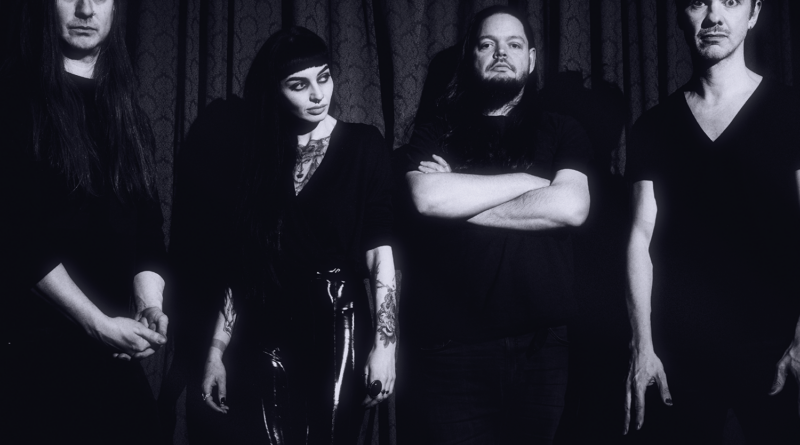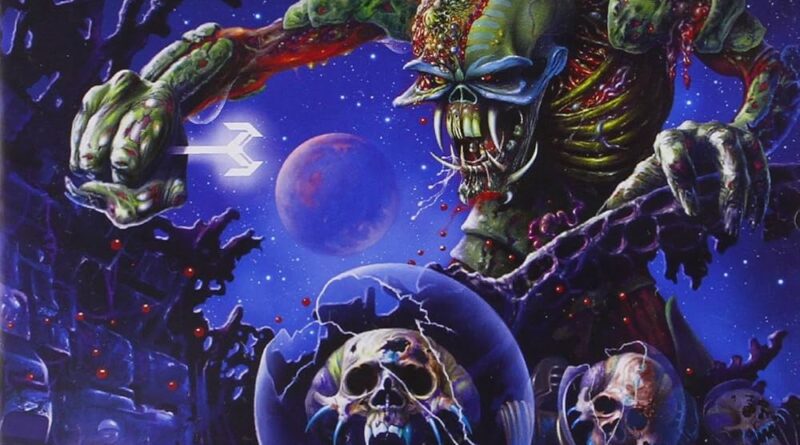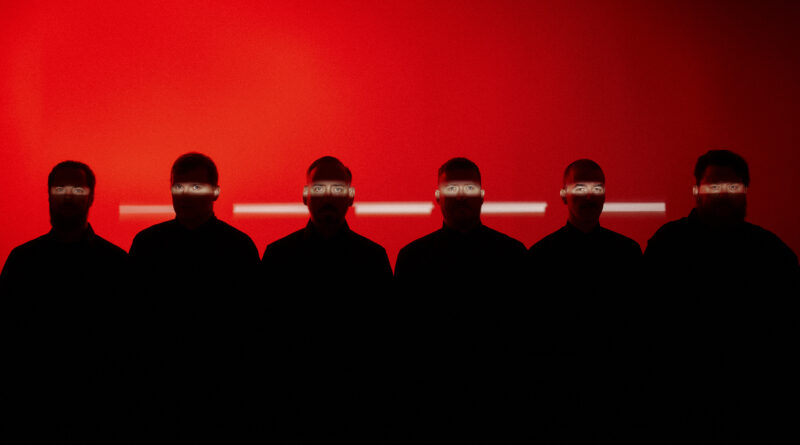
Somewhere In Time was Iron Maiden’s ultimate overdog challenge, where expectations of excellence had to be met. The classic line-up faced their fans and critics in a situation of success and stability unlike any they had ever known, and now they had to prove themselves.
Somewhere In Time
Produced by Martin “Masa” Birch
Released 29 September 1986
1986. The world was at Iron Maiden’s feet. The double whammy of
Powerslave (1984) and
Live After Death (1985) had seen Maiden conquer the globe, including the notoriously diffcult-to-break North American market. The World Slavery Tour in 1984-85 had been a gruelling triumph, and the Live After Death concert album was Maiden’s third consecutive platinum seller in the US.
Click here for the making of Powerslave and the dizzying tale of Maiden’s five-year plan to become big in America!What Iron Maiden achieved in the mid-80s is still the stuff of legend for up-and-coming bands, and it’s also the shadow that Maiden themselves stood in when they set out to forge their path in the late
1980s.

Eddie looks into the future of Iron Maiden.
Steve Harris might have felt great pressure at other crucial points in Maiden’s recording career. There had been the previous challenge of creating
The Number Of The Beast (1982) with new arrival Bruce Dickinson, and there would be the later challenge of doing
The X Factor (1995) when Dickinson had left. But their situation in 1986 was unique: Maiden’s line-up was stable and they had to deliver when everyone expected them to succeed. This is very different from feeling pressure to deliver when everyone expects you to fail.
Which makes the 1986 album all the more impressive.
Everyone even remotely interested in metal music was waiting for what the biggest metal band of the mid-1980s would come up with next, and it’s been heavily publicized that Bruce Dickinson had envisioned a drastic departure in style that the rest of the band and their producer Martin Birch rejected out of hand. What we got instead was Somewhere In Time, a classic Maiden-sounding album that clearly built on its predecessors but still sported some new and surprising elements.

Time travel! Maiden riding high in 1986.
The biggest change is immediately apparent: Synthesizers! Dickinson famously stated a couple of years earlier that you «can’t play heavy metal with synthesizers», but that is exactly what his own band does when they launch into Caught Somewhere In Time. The track is lengthy, among Maiden openers possibly most comparable to Where Eagles Dare on
Piece Of Mind (1983), and relying heavily on guitarists Adrian Smith and Dave Murray to weave soundscapes around the simplistic chord patterns.
To a large extent, this is Adrian Smith’s album, his playing and writing taking center stage like never before, exemplified by the excellent and uplifting first single Wasted Years:
Indeed, without any songwriting contributions from Dickinson, who had all his semi-acoustic songs ditched, a heavier burden rests on Smith’s shoulders to come up with both music and lyrics. In addition to Wasted Years, which is surely one of Maiden’s most commercially inclined tracks, he also delivers the metallic Sea Of Madness, featuring one of the greatest Maiden guitar solos ever, and the brooding and groovy second single Stranger In A Strange Land.

Eddie on his way through space and time, searching for those wasted years.
At the same time, Birch’s production is far removed from the bare-bones aesthetic of the previous couple of studio albums, and the more lush and layered sound sits well with the new songs. Somewhere In Time was crafted at Compass Point Studios in Nassau and Wisseloord Studios in Hilversum in the first half of 1986, and it was the longest-gestating and most expensive Maiden production to that point.
In many ways the effort to modernize Maiden’s sound paid off. The droning synthesizers are certainly a sign of the times, but they also suit the material. Somewhere In Time has a unique identity in the Maiden catalog and enjoys a great deal of love from Maiden fans,
as guest writer Pål Ødegård elaborates on in this essay.

Iron Maiden’s classic line-up photographed by Aaron Rapaport as they get ready for the release of Somewhere In Time, their 1986 “synthesizer album”: Dave Murray, Nicko McBrain, Steve Harris, Bruce Dickinson and Adrian Smith.
On the other hand, some of the material might have fallen through if it wasn’t for Birch’s skills with the knobs and faders. Heaven Can Wait is strictly filler in this reviewer’s opinion, despite the middle section that features the first (and best) of Maiden’s many football stadium chants. The Loneliness Of The Long Distance Runner is also rather middle-of-the-road as a composition, but the tasteful guitar work from Murray and Smith, as well as the frenetic pace of Nicko McBrain’s drumming, elevates it to the type of Maiden song you always enjoy hearing again.
Deja-Vu, a Murray composition with lyrics and melodies by Harris, is a liberating burst of short and sweet Maiden metal. It is not as memorable as previous rockers like Aces High or The Trooper, but it is certainly of a type that fans of the band would come to miss in later years.

The Somewhere In Time show on tour in 1986-87.
By this point one had come to expect the closing track of a new Maiden album to be the patented Harris epic. There had been Hallowed Be Thy Name, To Tame A Land and most memorably Powerslave‘s inimitable Rime Of The Ancient Mariner. On Somewhere In Time the epic tradition continues with Alexander The Great.
It does struggle to live up to the immense legacy of the previous Harris epics, closing the record on a fine if somewhat diluted note, but this has more to do with the standard that the band has by now established for themselves. In short, Maiden have made themselves hard to beat.
Bruce Dickinson had written great things for Maiden before, and despite being a no-show in the songwriting here he would do so again. In a similar way Harris’ material for Somewhere In Time, while certainly good, would be bested by his efforts for the next Maiden album.
Click here for a review of Seventh Son Of A Seventh Son (1988)!The theme of the Somewhere In Time album, as the song titles imply, is loosely tied together by most of the lyrics relating to travelling, space and time. With that starting point, long-time illustrator Derek Riggs delivers a truly classic sleeve that really makes vinyl worth it:

The current
black vinyl reissue is faithful to the original packaging, but the Somewhere In Time concept, lyrics and artworks lend themselves to the gatefold treatment, and the
2013 picture disc takes advantage of this. The gatefold opens to reveal shots of the band on and off stage in 1986-87.
But just when you thought the picture disc reissues were going to nail the actual pictures (unlike the notoriously period-confusing 1998 CD remasters), here comes the first fuck-up with a shot from the wrong tour in the bottom left corner. And the once celebrated Maiden quality control takes another nosedive with the new black vinyl edition, where the stereo channels are flipped into playing Murray on the right and Smith on the left…
Anyway, on with the good stuff, the picture disc itself is adorned with Riggs’ Wasted Years and Stranger In A Strange Land illustrations, the latter of which cleverly continues the tale of the album cover:

Taken as part 3 of an artwork trilogy that began with the Wasted Years single and continued with the album cover, also spinning off with the Somewhere On Tour illustration, this is Maiden and Riggs at the height of their visual storytelling, an embellishment of the music that inspired countless young bands in the 1980s.
In sum, Somewhere In Time is an album that’s very sophisticated as a concept and a production, but a little less compelling as a collection of songs. Some are strong, chiefly the excellent Smith entries, while Harris’ tracks disappoint slightly in light of what he delivered on Piece Of Mind and Powerslave.
















